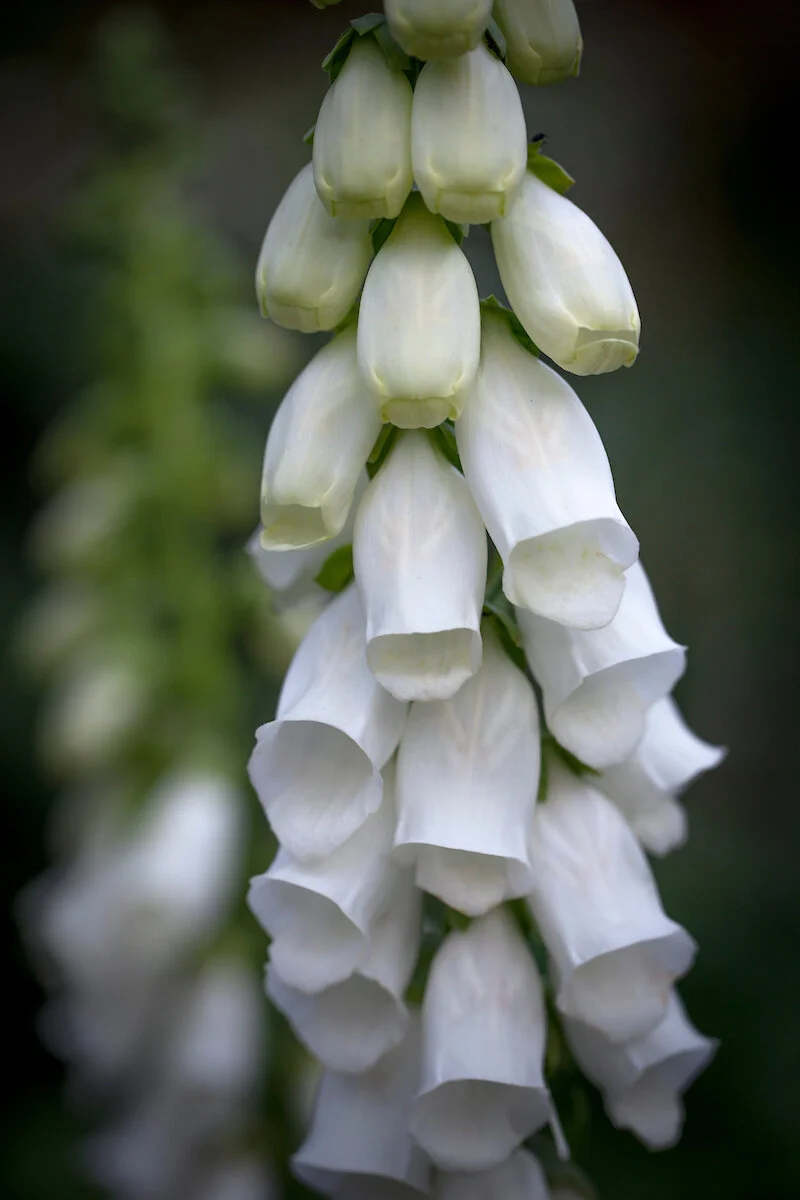Foxglove
Photographs by Sabina Rüber
Suttons Apricot
Snow Thimble
D. grandiflora
D. lutea
Most foxgloves are easy to grow from seed, germinating readily, from seed sown in early summer (biennials ) or late summer into autumn (perennials). The botanical name Digitalis is derived from the Latin digitus for finger, as the flowers resemble thimbles and fit over the finger like a glove. But the common name foxglove may not have anything to do with foxes (who after all don’t have fingers): a common interpretation of the etymology is that it morphed from ‘folks glove’ – in other words, little folk, or fairies. All parts of the plant are poisonous if ingested, causing heart block and even death – but you can’t be poisoned by just touching the flower, or by breathing in the pollen, so it’s perfectly safe to handle the plants or seeds, or indeed cut the blooms to put in a vase, although prudent to wash your hands afterwards.
The common British foxglove, Digitalis purpurea, is utterly beautiful when seen in drifts in dappled shade on the edge of woodland, while the white form, D. purpurea ‘Alba’, is more refined, and lovely with ferns, anemones and other plants that enjoy light shade. ‘Sutton’s Apricot’ (peachy pink) and ‘Pam’s Choice’ (white with maroon spotting inside the flowers) are two cultivars to look out for, and like D. purpurea, are biennials, forming leaves one year and flowers the next. These all flower in late May or early June before the main tranche of summer perennials have got going, and they should be sown in early summer, when they would be going to seed in the garden. Sow the tiny seeds in a seed tray and leave outside in a sheltered, shady spot to germinate. Prick out the seedlings over the summer and grow on in small pots before planting them out in the garden in autumn to form strong roots before flowering the following year. D. purpurea and its cultivars need a good humus-rich soil and ideally dappled shade.
Aside from the biennials, I’m experimenting with various perennial foxgloves and my absolute favourite is Digitalis grandiflora, which has pale, buttery yellow flowers speckled inside with golden brown. This and its slightly daintier cousin, D. lutea, are from southern Europe, so they will tolerate more sun than our native foxgloves, and both are reliably perennial, coming back to flower for several years before dying back. They look fabulous with almost anything, from orange geums to purple salvias. D. x mertonensis is one that I haven’t tried yet, but it’s on my list. A hybrid between D. purpurea and D. grandiflora, it has flowers in crushed strawberry pink. This year I have added to my collection with D. parviflora and D. ferruginea. D. parviflora is a curious thing producing slightly stiff spikes of small, densely-packed flowers in cinnamon-brown. It isn’t everyone’s cup of tea, but it always elicits a comment or two in my garden. D. ferruginea is more statuesque, with taller, slimmer spires in a rusty apricot orange. Both are perennial, and can be sown at the end of the summer, or in early spring. The perennial foxgloves flower later than the native biennials, usually June into July, and they are best sown fresh, so if you are collecting your own seed after the plants have flowered in summer, sow immediately onto good seed compost in a seed tray. The seeds are tiny and need light to germinate, so gently press them onto the surface of the compost and water from below. They don’t need much heat to germinate, so you can leave them outdoors or in a cold frame until they have sprouted, pricking out the seedlings when they are large enough to handle. If you’re sowing in late winter or early spring when the weather is colder, germinate them under cover at 15-18C, and plant out as soon as the soil warms up in late spring.
Back to The Flower Garden main page. To buy a copy of The Flower Garden book click here.



